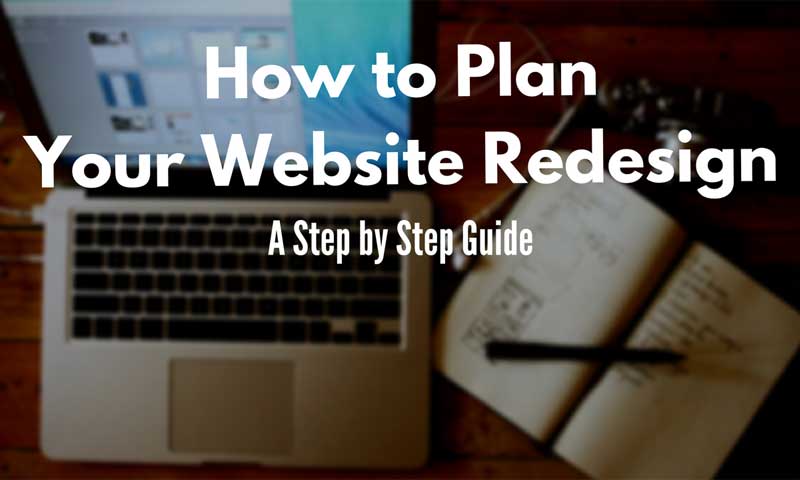
11 Apr How to Plan Your Website Redesign (Article)
By Paul Barrs.
One of the things we must do as business owners is to present ourselves as current and up to date as possible; no one likes dealing with old and outdated products or services. The world we now live in demands that we be ‘fresh’ and ‘relevant’.
Nowhere is this more important than on our websites!
Whether your potential customers meet you in the street, at a networking function or via a referral from a friend – the first thing they’re going to do afterwards is go and take a look at you online. They’ll look either at your website, or your social media profiles.
Tell me… how do you compare to your competition? Because if I think your “shopfront” is old, tacky, and uncared for, I won’t buy from you. Especially if your competition presents themselves in a better light than you do, no exceptions!
So – what does that mean digitally? It means that (1) you have to always be on the ball and keep your social media profiles / content up to date, and (2) every two to three years you need to look at giving your website a ‘once over’ and making sure it’s fresh, clean – modern – and current.
Here’s a quick checklist to help you walk through the steps and get the best possible results from a website redesign:
1. Look over your website and review your primary goal for the site. Is it a contact or a lead? Is it a sale? What is the site’s primary purpose? Once you have that firmly in mind, ask yourself, “Are there any secondary goals that can help lead to the primary goal?” This may be a subscription to a newsletter, or a questionnaire that gets filled out. What secondary goals can you create that lead your customers closer to your primary goal?
2. Once you have these goals firmly in mind, grab a pen and paper and draw for yourself a simple mud map showing your pages and posts layout. Start with the top of page menu bar – what pages do you need to show up there – then list any sub-pages. Spend whatever time you need to to list out each page and what its primary goal is (yes, EVERY PAGE should have a primary goal)… something that you can track and measure.
Sidebar: As you think about your pages and page structure, start to think about what pages people most often land on (what is the first page they see when they arrive on your website). Yes, the Home page is one, but it’s never the ONLY one. Then ask yourself, “If someone lands on page X, what is it that they are most likely looking for, can they find it easily?” Compare that visitor goal to your goal… are they the same? Could they be?
The point is this; you can’t just randomly add content and hope that it’s going to be enough to ‘sell’ your product or service. You’ve got to strategically look at the customers’ journey – from discovery to decision – and see that your website reflects the same in terms of its content!
3. Once you’ve created your new page structure, go and compare it to your old page structure. Are the page names the same? Probably not – so you’re going to need to make a note of those that have changed and create re-directs from the old pages to the new to make sure that no one gets lost along the way. This is also very important from an SEO point of view.
Note: If you already have certain pages that are getting significant traffic from search, I strongly suggest that you DON’T change them – unless of course they’re’ not converting. Traffic is only valuable when it converts to customers.
4. Write any new content that is required for the ‘new site’ and put it in place. This is best done in a demo site / staging site, which is a backup somewhere only you and your webmaster can see. Put all your new content in place and then recheck it to make sure it meets both yours and potential customer goals, and that the ‘flow’ from one page to another runs smoothly.
5. Very seriously consider upgrading your site to SSL (https://) if you’re not already. This is becoming more and more important in the eyes of consumers and Google – even if you’re not ‘selling’ online. Your web hosting company should be able to advise you on this if need be, and do it also.
6. Delete ALL the old files / old databases off the server and upload / install the new site. Often over time our websites gather ‘dust’ and if we’re active on our websites it’s easy to end up with lots of electronic junk which is unneeded (such as old backups / unused images from years past etc.). Now is the time to clean those out.
7. Run some tech checks on the new site to make sure everything is working; do a broken links review, a site speed and mobile friendliness review (these could have also been done while the site was in redevelopment, but check again). Make whatever changes you need to; to make sure everything is OK.
8. Check that you’re registered / set up correctly with Google Analytics (or Google tag Manager if you’re running other scripts such as Facebook or Adwords Remarketing) and Resubmit your site to Google’s Search Console. While you’re at it, update your XML sitemap and resubmit it also (make sure you delete the older versions). Wait a few days to get some reports from Google and then review them / action whatever needs doing.
9. Plug yourself into the reports that are available to you via Search Console or Analytics or another 3rd party application and set them up to come to you at minimum monthly – you need to keep an eye on things.
10. Sit back and have a coffee. Or something stronger!
And then start your marketing….
Yes, the process continues more or less forever. Like any form of marketing, work on your website (which probably plays a much larger part in your marketing message than you think), never stops. Marketing never should, right?


